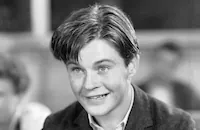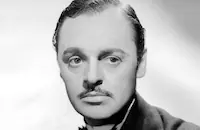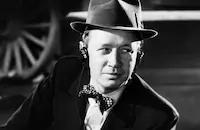Ma, He's Making Eyes at Me
Cast & Crew
Harold Schuster
Tom Brown
Constance Moore
Richard Carle
Anne Nagel
Jerome Cowan
Film Details
Technical Specs

Synopsis
When the exclusive woman's shop owned by C. J. Woodbury experiences a business slump, C. J. fires Tommy Shaw, his press agent, for offending a customer. While waiting in the unemployment line, Tommy meets aspiring actress Connie Curtiss, who confides her dream of owning a Woodbury gown. Inspired by Connie's confession, Tommy proposes a Miss Manhattan contest to publicize an inexpensive line of Woodbury designs. C. J. approves of Tommy's idea and hires Connie to be "Miss Manhattan," the average working girl. The campaign is a huge success and Tommy becomes so involved in his work that he ignores Connie's affection for him. Running out of publicity angles, Tommy decides to marry "Miss Manhattan" to "Mr. Manhattan" and hires Joe Porter for the job. To boost the sale of wedding accessories, Tommy decides to hold the ceremony during the Woodbury musical revue, but as the show proceeds, Tommy has second thoughts and decides to marry Connie himself. Joe, fearful of losing his benefits, protests, and as a result, the two come to blows. Tommy, the winner, then carries Connie onto the stage and they have a double wedding as C. J. decides to marry Minerva, his fiancée of thirty years.

Director
Harold Schuster
Cast

Tom Brown
Constance Moore

Richard Carle

Anne Nagel

Jerome Cowan

Elisabeth Risdon

Fritz Feld

Larry Williams
Frank Mitchell
Peggy Chamberlain
Vivien Fay
Marie Greene
Wade Boteler

Eddie Acuff
Henry Roquemore
Grace Hayle
Mary Field
Kitty Mchugh

Fay Mckenzie
Stanley Blystone
Mary Currier
Michael Mark

Jack Smith
Billy Engle
Dora Clement
Milton Charleston
Jack Roper
Crew
Elwood Bredell
Bernard B. Brown
Richard Carle
Sidney Clare
Con Conrad
Ed Curtiss
Ralph M. Delacy
William Fox
R. A. Gausman
Charles Gould
Charles Grayson
Edmund L. Hartmann
Sam Lerner
Jack Otterson
Charles Previn
M. E. Rourke
Joseph G. Sanford
Frank Skinner
Ed Sullivan
Vera West

Film Details
Technical Specs

Quotes
Trivia
Notes
The working title of this picture was Fashions for Sale. It was then retitled Ma, He's Making Eyes at Me to become part of Universal's series based on popular songs. Story writer Ed Sullivan was a columnist for the New York Daily News. Although the film print credits Charles Grayson and Edmund Hartmann with screenplay, a production chart in Hollywood Reporter attributes the screenplay to Harry Clork and Paul Gerard Smith. The extent of Clork's and Smith's participation in the film has not been confirmed.












